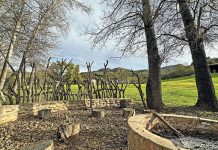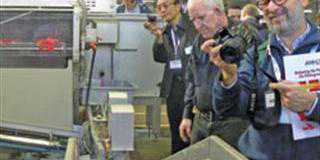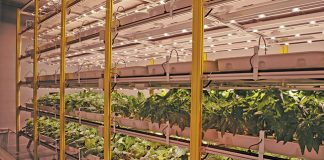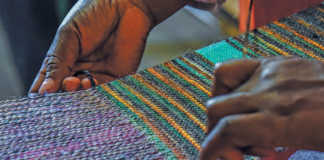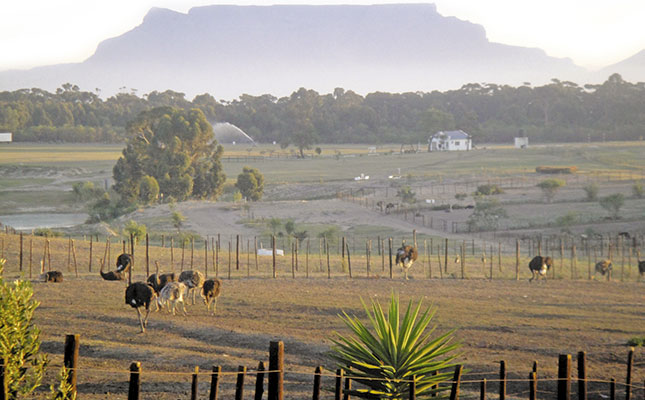
Photo: Jay Ferreira
When Gavin Kanigowski bought a 21ha farm near Durbanville and the N7 in the Western Cape in 1994, his aim was fairly straightforward: to breed ostriches for meat, feathers and leather. Named the Cape Town Ostrich Ranch, the operation was a family business from the start, with Gavin’s younger son Pawel involved as a working partner. Pawel’s brother, Garth, lives overseas but maintains a keen interest in the business. The Kanigowskis are South Africans of Polish descent.
READ:Approval of products against fall armyworm to be confirmed
Two or three years after launching, however, the they realised that they had to diversify to increase income. Experience showed it would make economic sense to focus on meat and leather, with feathers as a sideline. They also worked hard to develop their other major sideline, tourism, and this has grown apace. “Busloads of tourists would drive for six hours all the way to Oudtshoorn to see ostriches,” says Pawel. “So we decided to bring the experience closer to Cape Town.”
Today, no fewer than 60 000 tourists – by far the majority from overseas – visit the ranch annually. Despite the success of this aspect of the business, the main emphasis is still on ostrich production.Fortunately, this increases the ranch’s attraction, as far as visitors are concerned. About 320 ostriches are currently kept for breeding, slaughter and show. Over the years, the Kanigowskis have added considerably to their original 21ha, and today the total farm is 94ha in size.
The ostriches occupy about 33ha of this area, and are kept free-range in large, double-fenced camps of 2 000m² to 3 500m² each. Plans are underway to create another six breeding camps to house an additional 60 birds. Approximately 30% of their feed comprises natural forage, with the balance ostrich feed mix, but Pawel intends reducing supplementary feed within the next five years. Hatchlings stay on the farm for about 18 months before being selected for breeding or slaughter. The farm has shares in the Swartland Ostrich Abattoir.
International recognition
Cape Town Ostrich Ranch is EU-approved. “All of our birds are drug- and hormone-free,” says Pawel. “We only vaccinate the birds against bird flu to comply with EU regulations. Even my 14-year-old dog has been vaccinated to comply with EU registration requirements. These include a range of specifications – from the registration of animals to water trough design.”
To date, according to Pawel, the family has had no bird-flu problems.
Breeding experiments
As mentioned, the Kanigowskis added to their land. Seeking to expand their breeding programme, they acquired 73ha of marginal land adjoining the farm. “We wanted to compare intensive, controlled camp breeding with large-scale natural breeding,” says Pawel. “We did this for six years, but found that the natural breeding birds became so wild that we
had difficulty vaccinating them. So we moved these birds into an intensive camp breeding system and allocated the large camps to other production.”
The Kanigowskis’ efforts at diversification have gone considerably further than tourism. A keen polo player, Pawel took the opportunity six years ago to develop 6ha of the farm into a polo practice ground. This led to the formation of the Cape Town Polo Club, and a second polo ground is now under construction. “We have 20 members in a sport with fewer than 400 members countrywide,” says Pawel.
More recently, they heard that an events company was looking for a concert venue easily accessible from Cape Town and with plenty of parking and basic facilities. The ranch ticked all the boxes, and now hosts over 40 000 concert-goers a year.
Other secondary operations, none of which are directly connected to ostrich farming or tourism, are a 200-tree olive orchard, vegetable gardens, a sand quarry and a dedicated property division to develop the land effectively. A deli is also in planning. With all these, it is little surprise that the farm currently employs 65 permanent staff.
Apart from ostrich production, entertaining and serving the needs of the tourists remains the principal business of the farm, however. Activities include a tour of the daily workings of an ostrich farm; running a 145-seat restaurant that specialises in ostrich meat and eggs, as well as a 160-seat boma for functions; and operating a curio shop that sells ostrich products, from leather handbags and carved eggs to feather dusters. There is even an ostrich museum with egg carvings and decoupage, along with items of ostrich leather.
The fact of the matter, says Pawel, is that owning a farm in South Africa can be unprofitable, especially if one wants to rehabilitate land at the same time. It’s only through diversifying that one can survive. “In winter, the restaurant doesn’t do well, but the museum does. The restaurant is full in summer, but something else will drop off – then a concert or the curio shop carries us through.
“So every department has good and bad times, but no department would have survived this long if it had stood alone.”
Pawel admits that he ‘drops the ball’ occasionally, as he is so busy with so many different activities, but this has never slowed him down.“I’m privileged to own land so I just need to make it work. I feel strongly that I need utilise the land land as well and in as many different ways as possible.”
Demand – yet a lack of supply
Visitors to the Ranch generally stay for lunch and there are often egg-tastings. “We send our birds to the Swartland abattoir and then buy back meat, as regulation requires,” says Pawel. “Unfortunately, we can’t tag our birds and buy that meat back.
“Demand for ostrich meat in the restaurant far exceeds what the ranch produces, but we aim to at least match demand with supply.”
This is another reason the Kanigowski family is expanding its operation. “The meat we buy back for the restaurant is more than double the price we sell the live birds for,” explains Pawel. This aside, there is a general shortage of ostrich meat, as a result of the bird flu that the industry has struggled with in recent years. “We can sell as much ostrich meat as we can produce – we just can’t produce enough,” says Pawel.
International demand for the leather and feathers is high too, but local production has not kept pace, he explains. “What leaves me completely confused is that we have a bird of which every part can be used. Here in South Africa, we know how to farm ostriches and demand is sky high, yet half the farmers have left the industry. “We now have more farmed ostriches outside the country than within our borders. Why has all of this happened when we could be world leaders in ostrich production?”
Even ostrich eggs are in short supply. “We battle to supply our own restaurant because we offer ostrich egg starters on our menu,” notes Pawel. “Infertile eggs are drilled and the yolks are also used in the restaurant. “The ostrich is really the most completely useable animal imaginable. Even the bones can be ground and used for animal feed and fertiliser. It’s an incredible product.”
Peaks and troughs
Diversification does not mean that the ranch is immune from the tough economy or the financial difficulties faced by so many other South African farmers.“Media reports about bird flu mean people don’t want to eat in our restaurant,” says Pawel. “Crime news has a huge negative impact on us. And if it rains we can’t sell sand from the quarry. So we continually
face a variety of issues that affect various departments. But because of our diversity we can focus on what’s working.
“At the moment every department is expanding, so while this can stretch our cash flow at times, the growth is good and necessary.” Pawel admits that he is still fascinated by ostriches, but adds with a smile: “If you had told me 20 years I’d be dealing with the kind of issues I’m dealing with today, I’d never have believed you!”
Visit www.ostrichranch.co.za.
This article was originally published in the 8 November 2013 issue of Farmer’s Weekly.





